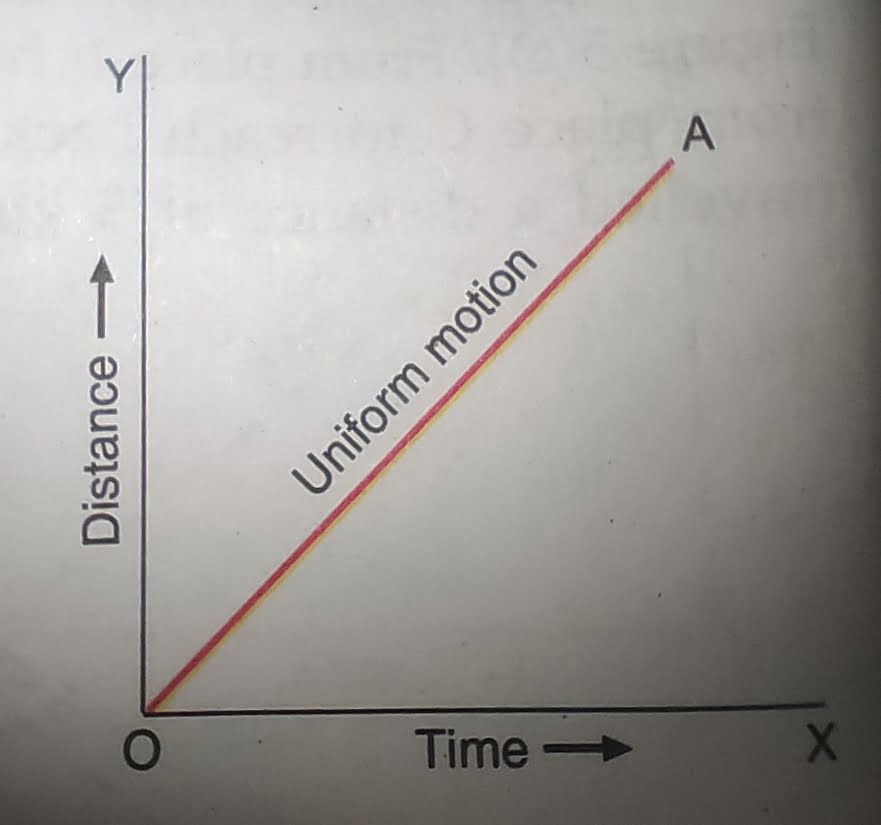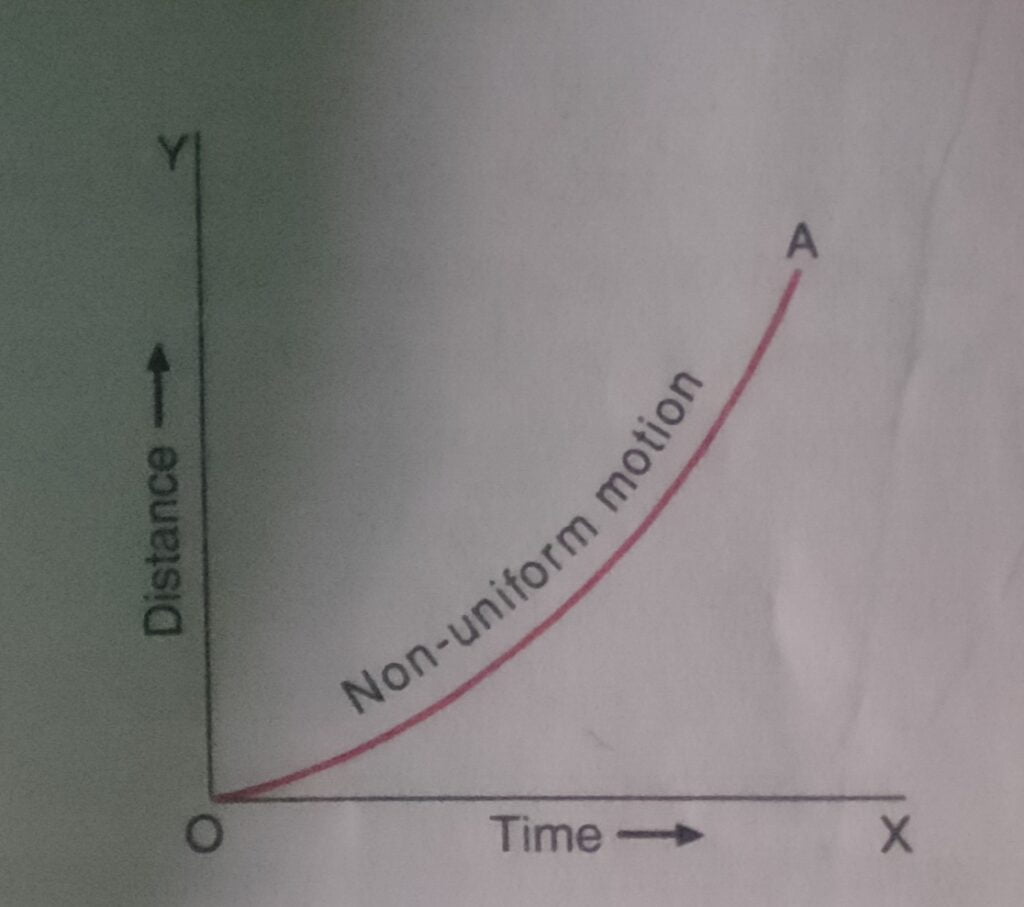A body has a uniform motion if it travels equal distances in equal intervals of time , no matter how small these time intervals may be . For example , a car running at a constant speed of say , 10 metres per second , will cover equal distances of 10 metres , every second , so its motion will be uniform . Please note that the distance – time graph for uniform motion is a straight line ( as shown in Figure 7 ) .

A body has a non – uniform motion if it travels unequal distances in equal intervals of time .
For example , if we drop a ball from the roof of a tall building , we will find that it covers unequal distances in equal intervals of time . It covers :
4.9 metres in the 1st second ,
14.7 metres in the 2nd second ,
24.5 metres in the 3rd second , and so on .
Thus , a freely falling ball covers smaller distances in the initial ‘ 1 second ‘ intervals and larger distances in the later ‘ 1 second ‘ intervals ( see Figure 8 ) . From this discussion we conclude that the motion of a freely

falling body is an example of non uniform motion .
The motion of a train starting from the Railway Station is also an example of non uniform motion . This is because when the train starts from a Station , it moves a very small distance in the ‘ first ‘ second . The train moves a little more distance in the ‘ 2nd ‘ second , and so on . And when the train approaches the next Station , the distance travelled by it per second decreases . Please note that the distance – time graph for a body having non – uniform motion is a curved line ( as shown in Figure 9 ) . Thus , in order to find out whether a body has uniform motion or non – uniform motion , we should draw the distance – time graph for it . If the distance – time graph is a straight line , the motion will be uniform and if the distance – time graph is a curved line , the motion will be non – uniform . It should be noted that non – uniform motion is also called accelerated motion .

uniform motion and nonuniform motion definition
https://www.google.com/amp/s/school.careers360.com/physics/uniform-motion-and-non-uniform-motion-topic-pge/amp
